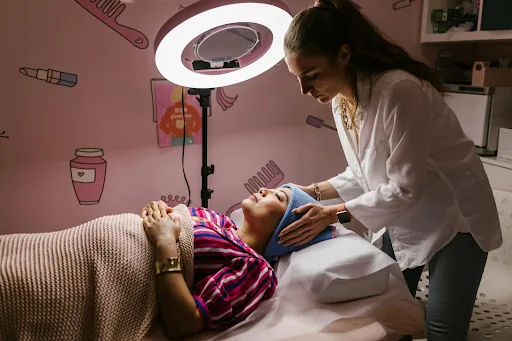5 minute read
Light therapy has become increasingly popular due to its numerous health benefits. It involves exposure to light at specific wavelengths to stimulate healing, improve mood, and boost overall well-being. Whether you’re using light therapy for skin rejuvenation, pain relief, or mental health support, understanding how to maximize its benefits is crucial. Here are six simple tips to help you get the most out of your light therapy sessions.
1. Choose the Right Type of Light Therapy for Your Needs
Before diving into light therapy, it’s essential to identify which type of light therapy best suits your specific health goals. Different wavelengths of light target different areas of the body and have varied effects. For instance, blue light is primarily used for treating acne and skin issues, while near-infrared light can penetrate deeper into tissues, making it suitable for reducing muscle soreness and inflammation. The first step is understanding what you’re trying to achieve. Consulting a healthcare provider or a specialist in light therapy can help you choose the correct light panel or device. You want to ensure that you’re using the right technology for your needs, whether it’s for skin rejuvenation, boosting mood, or managing chronic pain. Each device has its wavelength, power output, and treatment duration, which should align with your health objectives.
2. Establish a Consistent Schedule for Your Sessions
Consistency is key when it comes to reaping the full benefits of light therapy. You won’t experience significant results if you only use your device sporadically. Instead, create a schedule that incorporates light therapy into your daily routine. Aim for at least 15 to 30 minutes per session, depending on the type of therapy and device you are using. It’s important to understand that the effects of light therapy are cumulative, meaning the more consistently you use it, the more benefits you will see over time. Like exercising or eating healthy, it’s not about immediate results but about the long-term improvement in your well-being.
3. Use Light Therapy in Combination with Other Health Practices
To maximize the benefits of light therapy, consider combining it with other wellness practices. For example, using light therapy for mental health benefits can be more effective when paired with practices like meditation, mindfulness, or cognitive-behavioral therapy. This holistic approach enhances the overall impact, helping you feel more balanced and grounded. For skin health, light therapy works well when integrated with a solid skincare routine that includes hydration, sun protection, and antioxidant-rich products. One effective method for recovery and rejuvenation is red light therapy, which penetrates deeper layers of the skin and can support muscle recovery after workouts. This synergy allows you to achieve better results faster by using complementary wellness techniques alongside your light therapy regimen.
4. Protect Your Eyes and Skin During Light Therapy
While light therapy is generally safe, it’s essential to protect your eyes and skin, especially if you’re using high-powered devices or sessions involving intense light exposure. Prolonged exposure to bright lights without eye protection can lead to discomfort or, in rare cases, long-term damage. Many light therapy devices come with goggles, and it’s a good practice to use them. If you are using light therapy to target areas close to your face, always ensure that your eyes are adequately shielded. Even though the light may be beneficial for the skin, the sensitivity of the eyes requires extra precautions. Additionally, certain types of light, particularly UV light, can cause skin irritation or burns if overexposed.
5. Adjust the Distance and Angle of the Light for Optimal Results
The distance between the light therapy device and your skin or targeted area significantly impacts the effectiveness of the treatment. Too close, and you risk overheating or skin irritation; too far, and the light may not penetrate deeply enough to provide the desired benefits. Adjusting the device to the optimal distance is key to maximizing its effects. Most manufacturers provide guidelines on the ideal distance for their specific device. Typically, for skin-related treatments, a distance of 6-12 inches from the light source is recommended. For deeper treatments, such as muscle recovery, a distance of 12-18 inches may be more suitable to allow the light to penetrate effectively.
6. Monitor Your Progress and Make Adjustments
As with any health or wellness routine, it’s important to monitor your progress and make adjustments as needed. Keep a journal or log of your light therapy sessions, noting how you feel before and after each treatment, any improvements in your symptoms, and any side effects you might experience. This will help you track patterns and see how your body is responding to the therapy over time. If you’re not noticing improvements after a few weeks, it might be time to reassess your approach. Perhaps the duration of your sessions is too short, or the device’s intensity isn’t strong enough for your specific needs.
Light therapy is an excellent tool for improving health and wellness, but to fully harness its potential, it’s crucial to approach it with care and precision. By selecting the right type of light therapy, maintaining consistency, combining it with other health practices, and adjusting your approach as needed, you can significantly enhance the benefits of your sessions. With the right strategy, light therapy can become an integral part of your routine, promoting long-term health and well-being.





